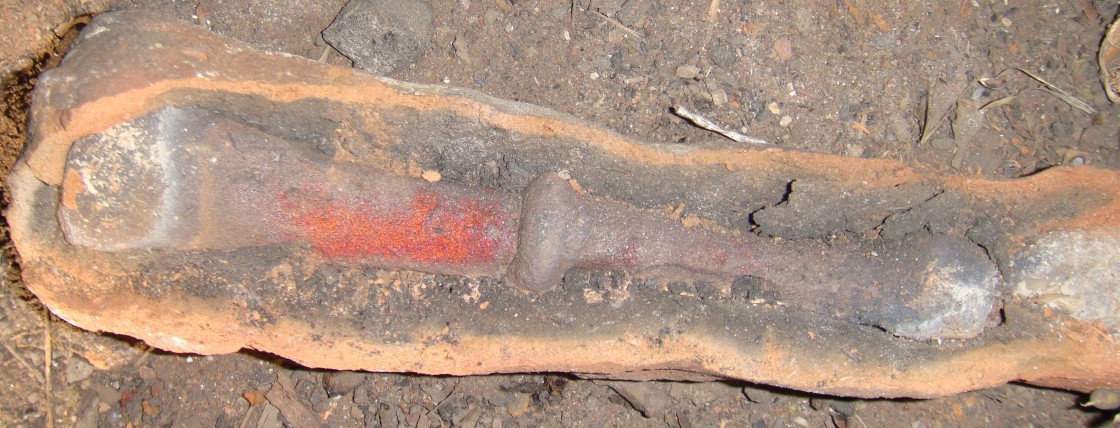While reading the book “Weights and measures in Scotland” by Connor and Simpson last week I noticed that the Jedburgh measuring jug, made in 1563 holding an ale pint, about 108.7 cubic inches, or 1.78 litres, had iron chaplets! Which is very odd, I have only ever read of bronze ones.
Jug pictured here:

Chaplets are little bits of bronze the same thickness as the pot or other item will be, placed around the mould between the inner and outer parts in order to make sure they don’t move around too much or shrink in or move and make the wall thinner than it should be.
You can see this picture here, the chaplets go in the space between the two parts of the mould, between the core and the cope, in the space filled by the metal:

They can also move when the casting is done, Butler and Green mention one or more bronze cauldrons where they are washed down out of their proper place by the inrushing liquid metal and others where they are not very well stuck onto the cast metal, perhaps because it was cooling too much when it reached them. They are apparently normally made by chiselling a square piece out of sheet metal.
So why would there be iron chaplets in this jug? Sure, they aren’t going to corrode away that quickly but using a non identical metal makes little sense.
The book “English Bronze cooking vessels and their founders 1350-1830 by Roderick Butler and Christopher Green is the go to book for cooking vessels, which were made in much greater numbers than official measures and I can’t find any mention of the use of iron chaplets. The foundryman David Rowan who made some measures in the 1550’s and 60’s, was of French descent and more importantly master founder at the royal ordnance workshops in Edinburgh castle. Which makes me think of checking Biringuccio for any mention of chaplets.
Unfortunately I have temporarily misplaced my copy. I had a look in Cellini but can’t see mention of chaplets, which certainly are not so important in lost wax casting, although I note that this Jedburgh measure was apparently cast using the lost wax process.
Would there be any advantage in having iron rods through the wax, holding the inner core in position? That’s about the only main advantage I can find, but why not use bronze ones, maybe there were none handy? In this case perhaps the metal was poured in such a way, from above, the rim side of the mould, such that the core had to be held in place, in the same way as a cannon would have it’s core held in place by a framework above the mould. Perhaps iron rods are best for this. Then after being cast, the precise volume can be checked and the rim smoothed down to ensure it is correct.
I wonder if any other items have such chaplets in them.
